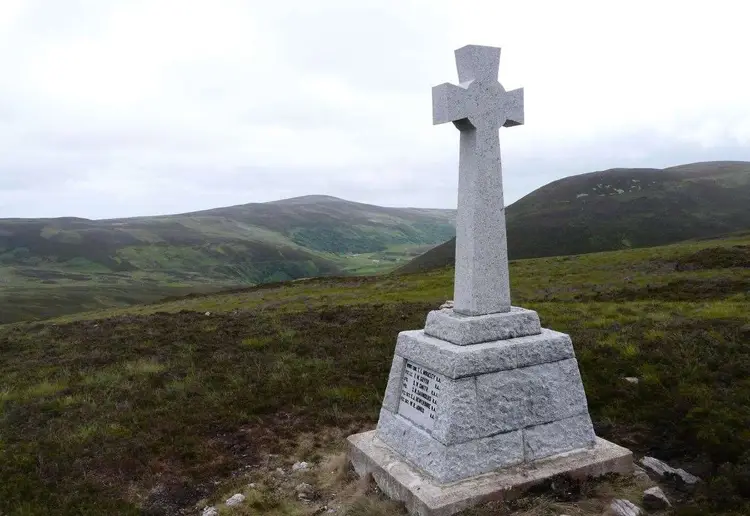New book on Duke of Kent wartime crash points to ‘travesty of justice’

The Duke of Kent, who is positioned second from the left, held the title of air commodore. Image credit: Imperial War Museum (CH 3167)
A recently published book has dismissed the conspiracy theories related to the Caithness air crash that claimed the lives of the Duke of Kent and 13 other individuals during World War II.
Ex-detective Michael Morgan launched his own probe into the tragic event that took place on August 25, 1942. On that day, a Sunderland flying boat lost its bearings in dense fog shortly after departing from Invergordon.
The 39-year-old Duke of Kent, the youngest sibling of King George VI, held the position of air commodore. He was on his way to Iceland for a welfare visit to RAF stations when the Sunderland W4026 aircraft crashed at Eagle's Rock, located inland from Dunbeath and Berriedale.
In his recently released book, *The Death of Prince George, Duke of Kent, 1942*, Mr. Morgan questions who had final authority over the flight and suggests there may have been an injustice involved.
Certain scholars have suggested that Rudolf Hess, who was Germany’s Deputy Fuhrer, traveled on the Sunderland W4026 as part of covert efforts to arrange a peace agreement in neutral Sweden. There are also theories that an unknown woman might have been on the flight, along with speculation that the duke and his associates may have been killed.
Mr. Morgan states, "When the plane went down at Eagle's Rock, neither Rudolf Hess nor any unidentified woman was on board. The theories about a conspiracy have emerged from fragments of information and misunderstandings regarding the initial death toll at the crash site, as well as the discovery of women's clothing and perfume."
I think that in several respects, the authorities were likely quite pleased to see the rise and spread of conspiracy theories. These theories serve as a kind of misinformation, distracting people from the actual problems at hand.
According to Mr. Morgan's research, the main concerns focus on navigational tools and compass systems.
Most sources indicate that the captain was Flight Lieutenant Frank Goyen, a 25-year-old Australian with considerable experience as a flying boat pilot. The only person to survive the crash, Flight Sergeant Andrew Jack, believed that the inquiry's conclusions, which held Goyen responsible for a "serious error in piloting," were deeply unjust.
Mr. Morgan's investigations have prompted him to wonder if Goyen was "demoted" to the role of second pilot for the tragic flight, with a wing commander stepping in as the primary pilot and captain.
If this is true, he claims that holding Flight Lieutenant Frank Goyen responsible is a miscarriage of justice.
The writer speculates about the possibility of a new official investigation into the crash that might clear Goyen of any responsibility. However, he points out that this is probably not feasible, as important documents are lost and many witnesses have passed away.
Mr. Morgan highlights that conspiracy theories have been intensified by the disappearance of the initial court inquiry report, witness statements, and other important documents, which are said to have either vanished or been destroyed.
He points out that the Sunderland team had been constantly shuffled, there was a novice navigator on board, and with a member of royalty present, it likely led to a crew that was overly enthusiastic.
There have been claims that some members of the crew might have been drinking. “It’s possible, even if it’s hard for some to accept, that alcohol was consumed both prior to and after take-off.”
The book "The Death of Prince George, Duke of Kent, 1942" is released by a branch of Pen and Sword Books, a publisher known for its focus on military history.
Mr. Morgan, who is 59 years old, has retired from his position as a high-ranking detective in the police force. He specialized as a senior investigating officer in murder cases and achieved the rank of detective chief inspector.
In the 1990s, he was involved in London's first investigation of unsolved murder cases. Currently, he resides close to Gravesend in Kent.
Mr. Morgan expressed his gratitude for the assistance he received from George Bethune of Dunbeath, as well as the staff at the Dunbeath Heritage Centre and the Nucleus archive center in Wick, among others.
Mr. Bethune is an expert on the crash and has a personal connection to the topic, as his late father, Will Bethune, who served as a special constable, was among the first responders at the location and confirmed the identity of the Duke of Kent's remains.
Mr. Morgan remarked, “I've always found this incident intriguing, particularly because numerous conspiracy theories have emerged around it over the last 80 years.”
I dedicated a year to searching through various archives to uncover the details of this case, and I'm also grateful to George Bethune for his helpful support during my investigation.
"I believe a lot of readers will be taken aback by my conclusions and the factors I think led to the deadly accident, as they likely differ significantly from their assumptions."
M S Morgan's new book, *The Death of Prince George, Duke of Kent, 1942: A Fresh Inquiry into the Truth*, is now available from Air World, a brand under Pen and Sword Books, priced at £25 for the hardcover edition.









































